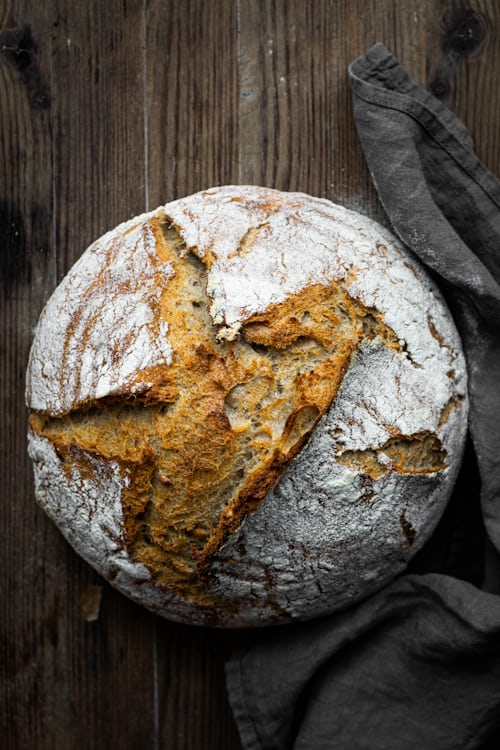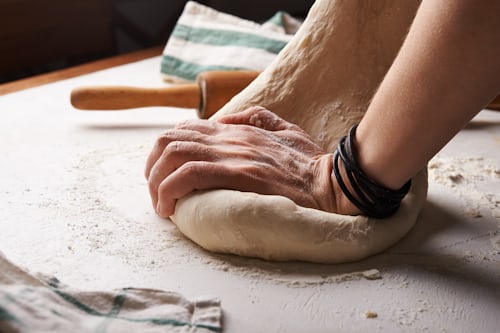Flour is produced by milling wheat and used by baking and pastry manufacturers. since flour is the primary component in baked goods

The following are the several kinds of flour that are used:
All-Purpose Flour: When a recipe just states “flour,” it means all-purpose flour. All-purpose flour is a standard among staples, made from a blend of soft and hard wheat and with a medium protein content of 10 to 12 percent. It is the most versatile flour, capable of generating flaky pie crusts, fluffy biscuits, and chewy pieces of bread, although not necessarily ideal for all applications.
Cake Flour is the flour with the least amount of protein (5 to 8 percent). Cake flour is perfect for soft-baked products, such as cakes (of course), but also biscuits, muffins, and scones, due to its absence of gluten-forming proteins. Cake flour is often chlorinated, a bleaching procedure that weakens gluten proteins and, more importantly, changes the starch of the flour, allowing it to absorb more moisture and sugar, resulting in a moist cake.
Pastry flour is soft wheat flour that is unbleached and has a protein content that is halfway between cake flour and all-purpose flour (8 to 9 percent). Pastry flour has the right combination of flakiness and softness, making it suitable for pies, tarts, and a variety of cookies at home.

Bread Flour: Bread flour is the strongest of all flours, offering the greatest structural support, with a protein concentration of 12 to 14 percent. This is particularly crucial in yeasted pieces of bread, which need a strong gluten network to confine CO2 gas generated during fermentation. The added protein not only adds volume and a chewier crumb, but it also causes the crust to brown more. Bread flour comes in white, whole wheat, bleached, and unbleached varieties. Bread flour may usually be replaced with unbleached all-purpose flour with satisfactory results.
Self-Rising Flour is flour that has baking powder and salt added to it during the milling process. Self-rising flour is often manufactured from the low-protein wheat that is usually cultivated in the South. It’s ideal for biscuits, muffins, pancakes, and certain cakes that are delicate. Self-rising flour should be kept firmly covered in its original packaging and used within 6 months after purchase; much longer and the baking powder loses its effectiveness. To store this flour safely, visit Buy containers for storing flour Malaysia
Whole-Wheat Flour: The endosperm, the germ (the embryo), and the bran are removed from the wheat kernel during milling (the outer coating). Various quantities of germ and bran are put back into whole-wheat flours. Whole-wheat flour is strong in protein, but the bran and germ reduce its capacity to create gluten, which is one of the reasons whole-wheat flour produces heavier denser baked products. Whole-wheat flour may be substituted for up to half of the all-purpose flour in most recipes. Whole-wheat flour is significantly more perishable than white flour because the wheat germ is abundant in oils prone to rancidity. It may be stored at room temperature for up to three months before being frozen.
Gluten-Free Flours: Gluten-free flours are manufactured from a variety of grains, nuts, and starches, and are available in a broad range of sizes. Rice flour, tapioca, and potato starch are used in some of the most readily accessible varieties. To assist replicate the chewiness associated with gluten, a little amount of xanthan gum is occasionally added.
Oat flour is made from oats rather than wheat. Gluten-free oat flour is ideal for those who follow a gluten-free diet. Your baked items may become thick or crumbly as a result of this type. As a result, you may need to increase the amount of liquid or rising components in your recipe. It’s simple to create at home.
Semolina: Semolina is formed from the coarsely crushed endosperm of durum wheat and is used in pasta and Italian dessert recipes. Semolina flour, often known as 00 flour, is a finely ground pasta flour with a protein concentration ranging from 11 to 12 percent. The gluten from durum wheat flour is robust but not very flexible. Gluten in red wheat flour, on the other hand, is both robust and stretchy.